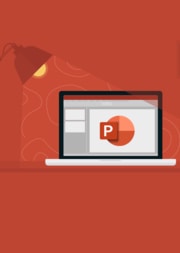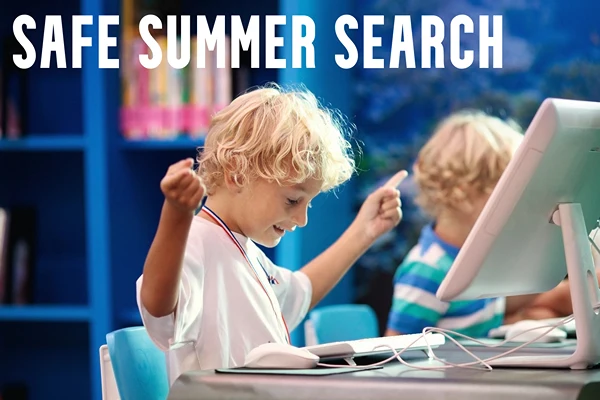PowerPoint Tips for Teachers: Best Tips to Create Engaging PPT
Many teachers are fond of using PowerPoint as their mode of teaching. Not only does it engage students who individually respond to different types of learning styles, it is more apt to hold the attention of learners who have grown up in a digital world of visual interaction.
In addition to traditional educational formats, many tuition agencies have its tutors incorporating this technique and many aspiring tutors are also encouraged to pick up the necessary skills to conduct lessons using PowerPoint slides.
#1: SIMPLICITY
Teachers should keep their slides as simple as possible. PowerPoint gives a lot of options for teachers to use such as many colors, fonts and interesting transitions and animations. Using them effectively can help to make the slides more interesting but overusing them will be more detrimental than helpful.
Students will tend to be distracted if there are too many animations and transitions. Simply assigning transitions to each slide just for the sake it is the equivalent of playing random keys on a keyboard. All animations and transitions should only be used with a purpose.
#2: THE AESTHETICS
Tutors tend to focus more on their content as compared to the format of their slides. They need to remember that they are making the slides for their students to learn from and make sure that the slides are pleasant for their eyes. Especially when you are doing an online tutoring job, where your focus is to make the topic easier to understand. This means that teachers should refrain from using bright and annoying colors like yellow and use more pleasing colors like black or white. Many teachers have started using Flux AI image generation for creating engaging illustrations that are also easy on the eye and conducive to learning.
Moreover, teachers should also keep in mind that the words on the slides should be big enough such that all the students can read the content comfortably without straining their eyes. Using an education ppt template can be beneficial in achieving these objectives because it can help enhance the visual appeal of the slides and create a more engaging learning experience for students.
#3: MAKE IT READABLE
Teachers should use contrasting colors to signify important parts of the slides. For example, keywords can be bolded or colored with a complementary color of the background. At the same time, teachers should not get carried away with colors as sometimes the color of their words may blend in with their slides making it difficult to read.
Another problem with colors is teachers may use certain combinations of colors without considering how it affects students who are color-blind. This includes color coding of charts and graphs. Thus, teachers should pay extra attention to see if the color scheme that they use caters to color-blind students.
#4: BEYOND WORDS
Reading paragraphs of words after paragraphs of words is not fun for anyone and can easily become boring and tiring after a while. Thus, teachers should add interesting features like pictures, charts, symbols, videos, gifs, etc.
These visual components can be very effective tools to capture the attention of all the students quickly and keep them engaged throughout the entire presentation.
#5: KEEP IT CONCISE
Sometimes the previous tip may not be enough to make the slides more engaging for students. Simply adding occasional images will not make reading paragraphs of words any more exciting. Thus, teachers should learn to make their points as concise as possible. The slides should not be a script containing all necessary information.
It should instead be small pointers that help the teacher refer to and elaborate on the spot. The words that teachers use should also be selected carefully. Teachers should refrain from using complicated vocabulary words that students may not know.
#6: TRANSITIONS
When moving onto a new slide, teachers should use transitions and animations so that they do not present all the information at once. Doing so may overwhelm students as they will try to read all the information as a whole which may be confusing and take away from the main point the teacher may be trying to cover.
Teachers can avoid this confusion by revealing each of their bullet points only when they are talking about it instead of all the words on the slide appearing at once.
#7: PRESENTATION
Following all the previous tips should set teachers on the right path to prepare slides of good quality. However, making the slides is only half the journey; teachers will also have to present it correctly.
Teachers should practice presenting what is on their slides so that during the lesson they are able to present in a coherent manner. Reading from the slides is a very amateur mistake that no teacher should be making and yet it is not too uncommon.
#8: EMPHASIZING ON IMPORTANT INFORMATION
Teachers can use certain tricks to help students focus on the more important part of the lesson. One simple but very effective trick is to blank the projector when the teacher wants to say something important. When students cannot see anything on the screen, they will naturally divert their attention to what the teacher is saying and this can help teachers emphasize which part is the most important.
#9: CREATE ADDITIONAL RESOURCES
Canva’s PPT to PDF Converter is a game-changer for teachers looking to elevate their presentation materials. With just a few clicks, educators can transform their PowerPoint slides into sleek, professional-looking PDFs. This makes sharing content a breeze—no need for specific software, and the PDFs look great on any device. Your original design, images, and animations stay perfectly intact, so your work remains as visually engaging as you intended it to be.
Aside from that, converting presentations to PDFs opens up endless possibilities. Teachers can turn their presentations into versatile resources like eBooks, training manuals, or interactive study guides. Canva’s tool makes it easy to repurpose your hard work into shareable, reusable content that saves you time while enriching the learning experience. It’s a simple way to provide students with high-quality, accessible materials they’ll love.
#10: CLARIFYING DOUBTS
Sometimes it can be unclear which part of the slide the teacher is talking about. Although students can simply ask and clarify, this problem should in fact never rise in the first place. Teachers should always present with a laser pointer in their hand, constantly pointing to which point they are talking about. Pointing simply with their finger is also usually not enough as it can be very unclear exactly where they are pointing to from the students’ perspective.
#11: PLANNING
It is difficult to plan everything accurately and perfectly before the lesson. Teachers will always run into the problem of the presentation taking too long or finishing too quickly. For the latter, the problem can be easily solved. Teachers should share something interesting related to the topic such as a story or a personal experience.
The first problem is however difficult to solve. Teachers will have to learn how and when to skip slides so that they can save time without it being difficult for the students to follow. This is a skill that only comes with practice. Whether in the classroom, in a home school environment or online with a tutor, PowerPoint is a great way to engage students who respond to different types of learning, such as auditory or visual learning.
Provide additional resources for students, such as engaging study notes. Start with easy design in Microsoft Word and then create a PDF.





